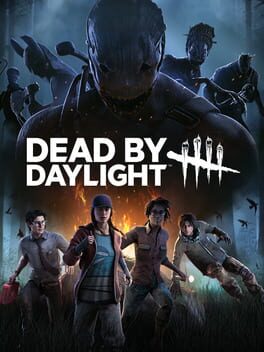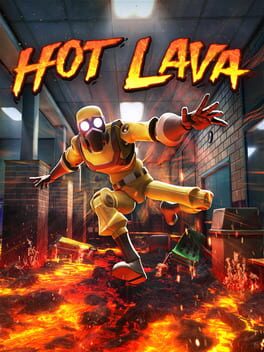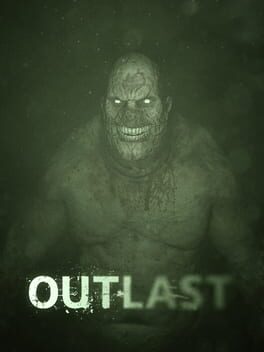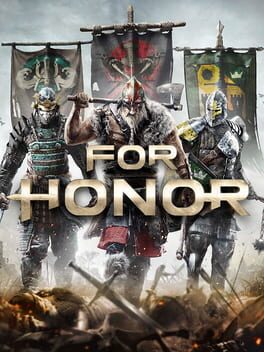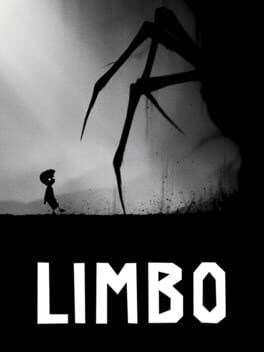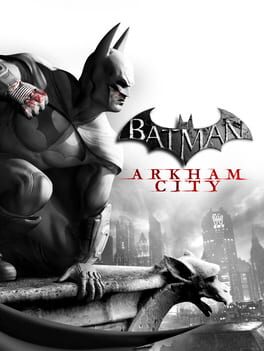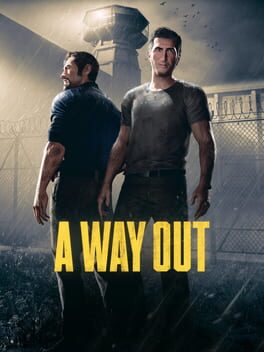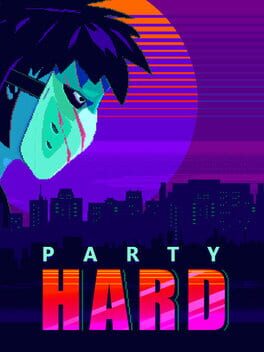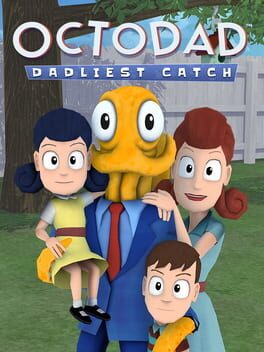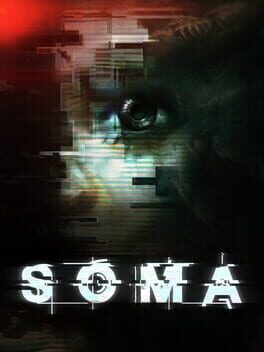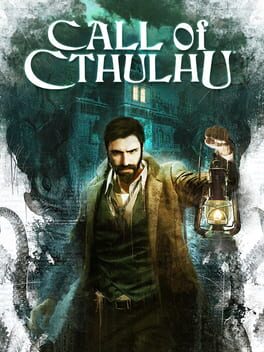Rezlo
BACKER
2016
After playing this game on and off for nearly 6 years and 5500 hours, I can’t help but harbor a love-hate relationship with this game. At its core, Dead by Daylight is a basic title with some comparatively good mileage considering its depth. Every match regardless of maps, characters, or other factors has four survivors repair generators to power doors to escape the match. Oppositely, the killer is tasked with sacrificing the survivors to the entity by throwing them on hooks to deplete their health phases. There’s some auxiliary factors like hatches for alternative escape when you’re the last alive, totems that power killer or survivor perks, or items that boost repair speed or healing efficiency. But really the generator-repairing, teammate-helping, killer-escaping dynamic is what you’ll be interacting with 99% of the time.
This is where fatigue rears its head. This gameplay loop is all there is to the game. No alternate objectives, no different modes, nothing. Doing the main objective sucks. All it entails is finding a generator and then holding left-mouse next to it. Some “skill checks” will occasionally pop up to make sure you’re paying attention but you’ll never miss those unless you’re new or make a misclick on your part. The real fun of the game is in being chased by the killer or making a clutch save. This is where the reward for skill is most felt in the game. Being able to reliably juke, time stuns just right or otherwise express your skill is done beautifully here. There’s not many mechanics to be memorized but those that exist can be honed to the maximum efficiency. And for as little as there is in DBD there’s a surprising depth that can only be understood after dozens of hours playing. Even still, that can only go so far. Playing killer can break up that monotony, but with more pressure to do everything on your own there’s little time to dawdle. And they run into the same problem in the opposite direction of JUST being able to patrol generators and interact with their own power. No sabotage mechanic or side abilities/tools exist.
The roadmap for the game boils down to an endless addition of new killers, survivors, and maps. With all but the killer powers being standardized or cosmetic. Now credit where credit is due. In the design department Behaviour does an A+ job. Whether it be their original characters or licensed chapters they more often than not do great at making a distinct chapter that fits well in the killer fog of DBD. That said, I would much rather they take a temporary or even permanent break from a new chapter and focus on adding to the depth of the gameplay loop. Like I said, getting chased is fun and the heart of the game. Everything else is just down-time until you do get chased though. Repairing generators isn’t a deep, interesting, or tasking experience. Why don’t they switch it up?
Dead by Daylight in the present is a decently popular game that would not be damaged by making more modes to experiment. It’s like they're too afraid of veering off from their simple but archaic gameplay loop in fear of messing something up. An unfounded idea because they have made a few sweet improvements to the game before. The Endgame Collapse mechanic was an awesome addition to the end of matches to prevent wasted time. Heck they don’t even have to make a new mode. Adding new ways to evade the killer besides pallets and windows, or new ways to reliably kill survivors besides hooking them would be a welcome feature. I mean they have a Public Test Build to test features before adding them to the main game, they should really use that more. Dead by Daylight is a fun evening game but I question anyone who can play this unendingly all the time. Once the honeymoon phase wears off it doesn’t have a large amount of endless staying power.
It’s no doubt a fun game to play with friends, but I would advise against taking it too seriously. People will argue until the cows come home about how unbalanced the game is in one direction or another. Most complaints are exaggerated or outright wrong. As a solo player you’ll definitely have a decidedly harder time, but experience and perks can mostly overcome this. It’s perfectly playable solo and rarely will you have an unfair time that’s not caused by external mistakes on the survivors’ part. Sure, some killers on certain maps can make or break the outcome. That’s just the nature of a game with so many different killer powers and map types. Though they could really use some more quality testing on the map design side. As good looking as the maps are, they are not the most well designed ones.
Believe it or not Dead by Daylight IS a game I would recommend. For all its missteps I still think DBD is a pretty good asymmetrical multiplayer game. Far too stagnant, but less obviously so if you know when to put it down and take a break. I’m hopefully optimistic about the future of the franchise with the announcement of more DBD universe games coming out, yet even without that Dead by Daylight is a game that holds on much longer than you think it would.
This is where fatigue rears its head. This gameplay loop is all there is to the game. No alternate objectives, no different modes, nothing. Doing the main objective sucks. All it entails is finding a generator and then holding left-mouse next to it. Some “skill checks” will occasionally pop up to make sure you’re paying attention but you’ll never miss those unless you’re new or make a misclick on your part. The real fun of the game is in being chased by the killer or making a clutch save. This is where the reward for skill is most felt in the game. Being able to reliably juke, time stuns just right or otherwise express your skill is done beautifully here. There’s not many mechanics to be memorized but those that exist can be honed to the maximum efficiency. And for as little as there is in DBD there’s a surprising depth that can only be understood after dozens of hours playing. Even still, that can only go so far. Playing killer can break up that monotony, but with more pressure to do everything on your own there’s little time to dawdle. And they run into the same problem in the opposite direction of JUST being able to patrol generators and interact with their own power. No sabotage mechanic or side abilities/tools exist.
The roadmap for the game boils down to an endless addition of new killers, survivors, and maps. With all but the killer powers being standardized or cosmetic. Now credit where credit is due. In the design department Behaviour does an A+ job. Whether it be their original characters or licensed chapters they more often than not do great at making a distinct chapter that fits well in the killer fog of DBD. That said, I would much rather they take a temporary or even permanent break from a new chapter and focus on adding to the depth of the gameplay loop. Like I said, getting chased is fun and the heart of the game. Everything else is just down-time until you do get chased though. Repairing generators isn’t a deep, interesting, or tasking experience. Why don’t they switch it up?
Dead by Daylight in the present is a decently popular game that would not be damaged by making more modes to experiment. It’s like they're too afraid of veering off from their simple but archaic gameplay loop in fear of messing something up. An unfounded idea because they have made a few sweet improvements to the game before. The Endgame Collapse mechanic was an awesome addition to the end of matches to prevent wasted time. Heck they don’t even have to make a new mode. Adding new ways to evade the killer besides pallets and windows, or new ways to reliably kill survivors besides hooking them would be a welcome feature. I mean they have a Public Test Build to test features before adding them to the main game, they should really use that more. Dead by Daylight is a fun evening game but I question anyone who can play this unendingly all the time. Once the honeymoon phase wears off it doesn’t have a large amount of endless staying power.
It’s no doubt a fun game to play with friends, but I would advise against taking it too seriously. People will argue until the cows come home about how unbalanced the game is in one direction or another. Most complaints are exaggerated or outright wrong. As a solo player you’ll definitely have a decidedly harder time, but experience and perks can mostly overcome this. It’s perfectly playable solo and rarely will you have an unfair time that’s not caused by external mistakes on the survivors’ part. Sure, some killers on certain maps can make or break the outcome. That’s just the nature of a game with so many different killer powers and map types. Though they could really use some more quality testing on the map design side. As good looking as the maps are, they are not the most well designed ones.
Believe it or not Dead by Daylight IS a game I would recommend. For all its missteps I still think DBD is a pretty good asymmetrical multiplayer game. Far too stagnant, but less obviously so if you know when to put it down and take a break. I’m hopefully optimistic about the future of the franchise with the announcement of more DBD universe games coming out, yet even without that Dead by Daylight is a game that holds on much longer than you think it would.
2019
Coming from the minds of Klei Entertainment, who gave us the wonderful Don’t Starve games, I’m not sure how they could fumble the bag this hard when it comes to bringing everyone’s childhood fantasy of the floor is lava to life. Hot Lava is what you get when the powers that be decide we need another soulless platformer with half-baked concepts. You have grocery stores, arcades, schools, and houses to monkey-bar swing through, slide by, and jump on as you collect cards and finish races. I originally intended to 100% the game but before I got halfway through I realized I couldn’t. Conceptually the game does everything right, it’s when you get into the details that its mediocrity starts to become apparent.
For one thing, you’re restricted to choosing only one special jump ability at a time. Why? I cannot fathom why. Even with the jetpack and pogo stick levels this game is extremely short-lived in how much it will entertain you. This game needs about three times as many abilities as it has, because a jump and a swing just doesn’t cut it when you get past the intro world. The easiest one that trivializes a lot is probably the double jump, but they all have their niches. It doesn’t matter though because only one ability at a time for you mister. Can’t be getting too crazy with it. It’s like the lay-up was right there for them. Just add a little more. They didn’t even change the worlds themselves to include new platforming challenges. The settings change yet the set pieces remain the same, making it feel real samey after a too-short time.
This is another one of those customize your character and earn little trinkets kind of game. A choice I question when again, this game does little to refine platforming past the year 2000. I legitimately wonder how anyone could get sucked into this game to be invested enough to try to complete their passes. If I were a little kid again I think I would just prefer to stick to real life fantasies. There might not be a double jump in real life, but I can promise you there’s so much more challenge and excitement there than this game could ever bring. Hopefully Hot Lava doesn’t stop us from one day getting a real contender for best new platformer using the novel concept it’s based on. I know I’m being harsher than it deserves, it’s just this game is almost comically boring and safe.
For one thing, you’re restricted to choosing only one special jump ability at a time. Why? I cannot fathom why. Even with the jetpack and pogo stick levels this game is extremely short-lived in how much it will entertain you. This game needs about three times as many abilities as it has, because a jump and a swing just doesn’t cut it when you get past the intro world. The easiest one that trivializes a lot is probably the double jump, but they all have their niches. It doesn’t matter though because only one ability at a time for you mister. Can’t be getting too crazy with it. It’s like the lay-up was right there for them. Just add a little more. They didn’t even change the worlds themselves to include new platforming challenges. The settings change yet the set pieces remain the same, making it feel real samey after a too-short time.
This is another one of those customize your character and earn little trinkets kind of game. A choice I question when again, this game does little to refine platforming past the year 2000. I legitimately wonder how anyone could get sucked into this game to be invested enough to try to complete their passes. If I were a little kid again I think I would just prefer to stick to real life fantasies. There might not be a double jump in real life, but I can promise you there’s so much more challenge and excitement there than this game could ever bring. Hopefully Hot Lava doesn’t stop us from one day getting a real contender for best new platformer using the novel concept it’s based on. I know I’m being harsher than it deserves, it’s just this game is almost comically boring and safe.
2013
This game feels just short of fully realized potential. One the one hand, I love the beginning setup. The asylum is literally coated in liquid macabre, and for a majority of the game, this status quo is maintained. Be it the sound design, the myriad of maniacs you encounter, your night vision video camera, or the sprawling asylum hell-maze, it can safely be said Outlast is a classic taste of horror, if a bit by-the-numbers. Unfortunately, I don’t think the final act could meet the expectations laid beforehand by the terrifying mini-bosses, and the exposition around the final boss' nature did nothing to increase terror or interest. The jump in threat level felt like a half-hearted attempt to increase the terror level. That disappointment, along with the sometimes-questionable enemy AI detection, are the most glaring issues in this overall decent horror experience.
2017
Long story short: For Honor is an exceedingly unique, extremely intense combat game that I would recommend to anyone who's a fan of fantasy, swordplay, and technical arena fighting.
Long story long: For Honor has a fairly steep learning curve. The good news is that at its most basic level, there is little move-type variety to learn. Like most other fighting games, there is a surprising level of simplicity in terms of overall attack choices. Where the game really starts is in the millisecond precision timings, max damage punishes, understanding how to approach different heroes, and how to best position/be a team player. If you’re willing to put in the time to practice practice practice then you WILL reap the rewards, and undoubtedly be satisfied doing so. With a roster of 29 heroes and counting, For Honor has a character for every archetypal playstyle, all made accessible with the easily obtainable in-game currency.
Regarding the Faction War, it functions as a great concept but ultimately can’t nail the execution phase. Implementing it as an outlet to fight for your chosen faction is a superb idea, but ultimately provides no meaningful interaction or rewards for the player. While a sequel is unlikely, one can only hope this idea gets more thought put into it eventually. Similarly, the campaign is fairly barebones and functions almost exclusively as a tutorial. Still, I commend the fact that it even has a campaign at all. Though maybe I just have a soft spot for the quaint little story.
Speaking as someone who is by no means a hardcore fighting game player, this game’s setting and captivatingly simple combat has had me hooked from launch. If you’re so much as even next to the metaphorical fence, I would highly suggest giving it a chance.
Long story long: For Honor has a fairly steep learning curve. The good news is that at its most basic level, there is little move-type variety to learn. Like most other fighting games, there is a surprising level of simplicity in terms of overall attack choices. Where the game really starts is in the millisecond precision timings, max damage punishes, understanding how to approach different heroes, and how to best position/be a team player. If you’re willing to put in the time to practice practice practice then you WILL reap the rewards, and undoubtedly be satisfied doing so. With a roster of 29 heroes and counting, For Honor has a character for every archetypal playstyle, all made accessible with the easily obtainable in-game currency.
Regarding the Faction War, it functions as a great concept but ultimately can’t nail the execution phase. Implementing it as an outlet to fight for your chosen faction is a superb idea, but ultimately provides no meaningful interaction or rewards for the player. While a sequel is unlikely, one can only hope this idea gets more thought put into it eventually. Similarly, the campaign is fairly barebones and functions almost exclusively as a tutorial. Still, I commend the fact that it even has a campaign at all. Though maybe I just have a soft spot for the quaint little story.
Speaking as someone who is by no means a hardcore fighting game player, this game’s setting and captivatingly simple combat has had me hooked from launch. If you’re so much as even next to the metaphorical fence, I would highly suggest giving it a chance.
2010
Limbo is an extremely short minimalist puzzle-platformer that doesn’t take but a couple hours to beat. With Its film noir art style and sound design it’s equal parts creepy and serene, an aspect that I would opine justifies the game’s existence, if not as much as I’d like.
Beyond that, Limbo functions as a simple, standard platformer. It has a water section, an anti-gravity section, and the works. If that’s your fancy, you’re in luck. I’d only warn against expecting anything too inventive, as it’s more of an experience than a game. Limbo is best appreciated when you look at it as an interactive art piece. And don’t get me wrong, it’s a gorgeous art piece at that. The problem is that I don’t think Limbo does enough to hold your attention once the novelty of the aesthetics wears off. If all the sections were like the spider one I would likely rate this higher. It’s a fun time, it just has nothing crazy going on.
Beyond that, Limbo functions as a simple, standard platformer. It has a water section, an anti-gravity section, and the works. If that’s your fancy, you’re in luck. I’d only warn against expecting anything too inventive, as it’s more of an experience than a game. Limbo is best appreciated when you look at it as an interactive art piece. And don’t get me wrong, it’s a gorgeous art piece at that. The problem is that I don’t think Limbo does enough to hold your attention once the novelty of the aesthetics wears off. If all the sections were like the spider one I would likely rate this higher. It’s a fun time, it just has nothing crazy going on.
Shadow of Mordor is a fantastical hack and slash in the LOTR-verse. From a LOTR outsider’s perspective the story felt as creatively safe as possible. I’m sure someone else could speak more intelligently on it, but really it’s a revenge story when you get down to brass tacks. And that easily digestible setup, along with the viscerally brutal combat were enough to keep me invested for the full ride.
Speaking of, the combat takes full inspiration from Rocksteady’s Batman games, with an added lethal brutality that Batman could never get away with. Your main weapons are your sword for outright fights, your bow for ranged takedowns, and your dagger for stealth encounters. Each weapon can be modified by acquiring runes, which grant special abilities based on the rarity and description of the rune. These modifiers, along with the ability trees, work wonderfully to make you feel like you’re becoming a bigger badass as the game goes on. No ability feels shoe-horned in for the sake of providing filler content. Most actually build upon the foundation of previous moves instead of providing a new move only usable in niche situations.
Make no mistake though, the prize pig of the game is the Nemesis System. A feature that allows for unique experiences with enemies in which they will remember previous interactions with you, possess unique weaknesses and strengths, be promotable, brandable (essentially making them work for you), and able to be assassinated and threatened. Keep in mind too the hierarchy of rank can change in real time and entirely separate from the player’s involvement. All things considered it’s a superbly neat spin on the typical organization of enemy hordes.
As for my lamentation, it is one of overinvestment. The combat features are swell, but they only go so far for so long before they too become repetitive. I wish there was more to see and do in the world. While the story demands you play on an Uruk wasteland, it can feel excessively barren in a way I don't think was intended. Perhaps some sort of outpost liberation mechanic or dynamic world changes would have given it more life.
Speaking of, the combat takes full inspiration from Rocksteady’s Batman games, with an added lethal brutality that Batman could never get away with. Your main weapons are your sword for outright fights, your bow for ranged takedowns, and your dagger for stealth encounters. Each weapon can be modified by acquiring runes, which grant special abilities based on the rarity and description of the rune. These modifiers, along with the ability trees, work wonderfully to make you feel like you’re becoming a bigger badass as the game goes on. No ability feels shoe-horned in for the sake of providing filler content. Most actually build upon the foundation of previous moves instead of providing a new move only usable in niche situations.
Make no mistake though, the prize pig of the game is the Nemesis System. A feature that allows for unique experiences with enemies in which they will remember previous interactions with you, possess unique weaknesses and strengths, be promotable, brandable (essentially making them work for you), and able to be assassinated and threatened. Keep in mind too the hierarchy of rank can change in real time and entirely separate from the player’s involvement. All things considered it’s a superbly neat spin on the typical organization of enemy hordes.
As for my lamentation, it is one of overinvestment. The combat features are swell, but they only go so far for so long before they too become repetitive. I wish there was more to see and do in the world. While the story demands you play on an Uruk wasteland, it can feel excessively barren in a way I don't think was intended. Perhaps some sort of outpost liberation mechanic or dynamic world changes would have given it more life.
2011
The Bat is back and broodier than ever in this upscaled addition to the Rocksteady canon. Naturally, this means doubling down on the combat, gadgets, side-missions, and the world itself. Before I go into detail, does Arkham City prove itself a worthy sequel to the legacy of Arkham Asylum? 100%, and in many ways surpasses it.
The story is grand, engaging, and packed full of iconic Batman rogues, all underlit by an absolutely chilling operatic theme. Without spoiling too much, it does a marvelous job at elevating the stakes and action, with multiple factions vying for control of the isolated Arkham City. With the exception of Hugo Strange, Catwoman, and Robin being underutilized, it was a fantastic story that really expanded on the Batman mythos. Speaking of, Batman himself is definitely more moody this time around, but beside the fact that he’s the Dark Knight, there’s a good reason for his grumpiness here.
In Arkham City, you’re working with a much bigger playground than before, which feels like the perfect size. Landmarks are clear and gliding has been made more involved and practical for travel, making it a blast to coast around the city. What’s more, the various side missions are short, sweet treats that put the spotlight on the lesser featured villains. Sure, some missions are a bit less deep than I’d like, but it was cool to see so many new and returning faces.
Most noticeable of all, the combat has been greatly expanded, both for and against you. But don’t be mistaken, the game is still heavily in your favor. The special moves and gadgets make going through this entry a relative breeze. Like Arkham Asylum, City is easy if you know what you’re doing. To me, the draw of Rocksteady combat (beside the animations) has always been trying to build the biggest combo using the largest variety of special moves. And with challenge mode being back and bigger than ever, allowing you to now play Catwoman, Robin, and Nightwing, there’s no shortage of opportunities to lay the hurt on some unsuspecting mooks. This extends to the breakout boss fights like Mr. Freeze as well, which really emphasizes thinking outside the box.
The story is grand, engaging, and packed full of iconic Batman rogues, all underlit by an absolutely chilling operatic theme. Without spoiling too much, it does a marvelous job at elevating the stakes and action, with multiple factions vying for control of the isolated Arkham City. With the exception of Hugo Strange, Catwoman, and Robin being underutilized, it was a fantastic story that really expanded on the Batman mythos. Speaking of, Batman himself is definitely more moody this time around, but beside the fact that he’s the Dark Knight, there’s a good reason for his grumpiness here.
In Arkham City, you’re working with a much bigger playground than before, which feels like the perfect size. Landmarks are clear and gliding has been made more involved and practical for travel, making it a blast to coast around the city. What’s more, the various side missions are short, sweet treats that put the spotlight on the lesser featured villains. Sure, some missions are a bit less deep than I’d like, but it was cool to see so many new and returning faces.
Most noticeable of all, the combat has been greatly expanded, both for and against you. But don’t be mistaken, the game is still heavily in your favor. The special moves and gadgets make going through this entry a relative breeze. Like Arkham Asylum, City is easy if you know what you’re doing. To me, the draw of Rocksteady combat (beside the animations) has always been trying to build the biggest combo using the largest variety of special moves. And with challenge mode being back and bigger than ever, allowing you to now play Catwoman, Robin, and Nightwing, there’s no shortage of opportunities to lay the hurt on some unsuspecting mooks. This extends to the breakout boss fights like Mr. Freeze as well, which really emphasizes thinking outside the box.
2011
As much as I wanted to like Homefront, I can’t help but lament its inability to overcome its shortcomings. On the whole, Homefront struggles to differentiate itself from the generic shooter template enough to make a lasting impression.
The red dawn-like setup is a neat idea that’s not been done a lot and it’s regretfully squandered here on an execution too safe and boring for its own good. I can commend the radio transmissions between missions for adding context, and the small peaks into the direness of occupied America can be moving, but it’s all undercut by a cliche cast of characters and a protagonist that may as well be a cardboard cutout. Where Homefront shines is in isolated scenes, both grand and grisly, but those moments are too sparse to keep the player engaged. Not to mention the story ends far too abruptly and with absolutely no punch.
As for the gameplay, Homefront never rises above basic competency. Most of the guns are forgettable, with the exceptions of the special guns like the launchers and snipers. The vehicle control sections are fine, even if they feel more like a met quota than a fun purposeful choice. Beyond some rudimentary grenades and rarely C4, that about does it for your arsenal. Again, while the groundwork exists for something experimental here, Homefront disappointingly insists on offering nothing new, even as a gimmick.
The red dawn-like setup is a neat idea that’s not been done a lot and it’s regretfully squandered here on an execution too safe and boring for its own good. I can commend the radio transmissions between missions for adding context, and the small peaks into the direness of occupied America can be moving, but it’s all undercut by a cliche cast of characters and a protagonist that may as well be a cardboard cutout. Where Homefront shines is in isolated scenes, both grand and grisly, but those moments are too sparse to keep the player engaged. Not to mention the story ends far too abruptly and with absolutely no punch.
As for the gameplay, Homefront never rises above basic competency. Most of the guns are forgettable, with the exceptions of the special guns like the launchers and snipers. The vehicle control sections are fine, even if they feel more like a met quota than a fun purposeful choice. Beyond some rudimentary grenades and rarely C4, that about does it for your arsenal. Again, while the groundwork exists for something experimental here, Homefront disappointingly insists on offering nothing new, even as a gimmick.
2016
One cursory glance at Abzu and you know exactly what you’re in for: a small dive (wink) in a gorgeous underwater oasis interspersed with bite-sized puzzles and breadcrumb-like storytelling. By themselves the landscapes and sea life are fun to engage with, but admittedly I would have liked to see more diversity in how chapters played out. Add to that Abzu’s message feels a little too safe and on the nose, though I can sympathize with the difficulty in telling a succinct story in a short game with no dialogue. Now don’t let me sell it short, as the game does succeed in providing exceptional ambience and immersion with its vivid color palette and tranquil soundtrack, in addition to being incredibly accessible. Simply put, If you fancy the idea of an ocean walking simulator then the game is an easy pitch, but I’d argue almost anyone can get some decent mileage out of Abzu.
2018
A lukewarm co-op game whose major pitfall is being woefully uninspired. A Way Out does grant some decent enjoyment, but not from what it offers at face value. The voice acting is subpar, the writing fit for Wattpad, and the main story is comically generic. Where it does shine is in the moment to moment skits that come with playing the game with a good co-op partner. The throwaway mini-games, derpiness of the presentation and dialogue, and general absurdity makes the game charming despite its flaws. And it does so in a way that makes A Way Out an unintentionally excellent comedy.
A good example is when one player is left to goof around and throw darts while the other is having what should be a serious conversation with a family member, made even funnier by the unflinchingly straight way the game is presented. Yet, even those moments are too fleeting to carry the rest of the game. Don’t get me wrong, the split-screen approach is a fun throwback and the commitment to cooperative actions is admirable, but in practically every sense A Way Out is more novelty than novel.
A good example is when one player is left to goof around and throw darts while the other is having what should be a serious conversation with a family member, made even funnier by the unflinchingly straight way the game is presented. Yet, even those moments are too fleeting to carry the rest of the game. Don’t get me wrong, the split-screen approach is a fun throwback and the commitment to cooperative actions is admirable, but in practically every sense A Way Out is more novelty than novel.
2015
Party Hard is true to its name; it’s a decently hard game, a fact I wouldn’t mind if it wasn’t quite as punishing as it is. The stamina, AI eyesight, and frequent cops make for a sometimes frustrating experience when all your progress is lost because there’s nowhere or way to run, sometimes due to the structure of the map itself. Conversely, the gameplay loop is something I actually quite enjoyed in its most basic essence. Being a party-stalking slasher is a great hook and rife with potential, but Party Hard doesn’t go all in, a sad fact given what this game could be. There’s not enough traps, characters, items, weapons, and enemy varieties for the type of game this is. A game like Party Hard is meant to survive and thrive based on its diversity of options, but more often than not you're left with only your trusty knife and a prayer. While perfectly playable, Party Hard leaves you wanting more than it can give you.
Octodad: Dadliest Catch embodies nearly everything a light indie title should strive to be. It’s quirky, has a breezy and contained structure, and most importantly doesn’t overextend its premise. It’s a game that never tries to be serious (clearly), yet doesn’t overdose on its wholesomely juvenile humor.
Much to my surprise Octodad’s controls were significantly less cumbersome than I first expected. While still unwieldy in a comical manner, the zany control scheme wasn’t frustrating almost at all, with the exception of times where you were forced to climb a ladder. On the contrary, the wacky movement gimmick gives just the right amount of challenge and chaos to sell you on the game’s cutesy concept. With each mission being fairly short the game is ripe for small-burst sessions or an easy binge if you got the afternoon. Either way, I think the level lengths are perfect just the way they are, though another mission or two wouldn't have hurt. Regardless, If the idea of playing an octopus with questionable control of his limbs as he tries to play dad interests you, Octodad is the game for you.
Much to my surprise Octodad’s controls were significantly less cumbersome than I first expected. While still unwieldy in a comical manner, the zany control scheme wasn’t frustrating almost at all, with the exception of times where you were forced to climb a ladder. On the contrary, the wacky movement gimmick gives just the right amount of challenge and chaos to sell you on the game’s cutesy concept. With each mission being fairly short the game is ripe for small-burst sessions or an easy binge if you got the afternoon. Either way, I think the level lengths are perfect just the way they are, though another mission or two wouldn't have hurt. Regardless, If the idea of playing an octopus with questionable control of his limbs as he tries to play dad interests you, Octodad is the game for you.
2015
When you’re first thrust into the world of Soma, alone and in an unfamiliar research facility many hundreds of feet below the surface, you’re just as confused as the titular protagonist Simon is. With the help of a quickly acquired companion by the name of Catherine, who guides you through your journey by voice alone, you begin to discover the nature of the world around you and learn of a potential last hope for humanity after a catastrophic event.
During this voyage you traverse numerous research stations and underwater locations, all eerily empty except for the few machines that remain. It’s this somber setting that serves as the backdrop to the real bread and butter of the game, Simon’s conversations with Catherine, both about what the world’s become and more philosophical topics like, “what is consciousness?”, “what does it mean to be you?”, and “when do we cease to exist, really?”. All seamlessly strung together in a way that feels inexplicably natural despite the circumstances in which you’re asking them.
In this interweaving of setting and narrative, Soma does something really special. While both can be admired independently for their contemplative qualities and visuals, there is more to it than just that. The various desolate and rundown locations serve as a perfect fuel for the narrative, adding a complementary dash of loneliness, sorrow, and awe. Of course it helps that the game is legitimately beautiful too, and even allows you to toggle a safe mode option, letting you play the game without fear of dying to potential threats. It’s a nice setting for when you want a cerebral experience as opposed to a more visceral one.
My only lament is that it ended at all, but I am satisfied with its length and message. The longer I played the more enthralled I became in the overarching story of failure, redemption, and hope. All that said, don’t think Soma is a non-stop montage of conversation. The game knows when to cease the chatter and let you take in the world, but you know they've succeeded in hooking your interest when you’re excited for the next time Simon or Catherine open their mouths.
During this voyage you traverse numerous research stations and underwater locations, all eerily empty except for the few machines that remain. It’s this somber setting that serves as the backdrop to the real bread and butter of the game, Simon’s conversations with Catherine, both about what the world’s become and more philosophical topics like, “what is consciousness?”, “what does it mean to be you?”, and “when do we cease to exist, really?”. All seamlessly strung together in a way that feels inexplicably natural despite the circumstances in which you’re asking them.
In this interweaving of setting and narrative, Soma does something really special. While both can be admired independently for their contemplative qualities and visuals, there is more to it than just that. The various desolate and rundown locations serve as a perfect fuel for the narrative, adding a complementary dash of loneliness, sorrow, and awe. Of course it helps that the game is legitimately beautiful too, and even allows you to toggle a safe mode option, letting you play the game without fear of dying to potential threats. It’s a nice setting for when you want a cerebral experience as opposed to a more visceral one.
My only lament is that it ended at all, but I am satisfied with its length and message. The longer I played the more enthralled I became in the overarching story of failure, redemption, and hope. All that said, don’t think Soma is a non-stop montage of conversation. The game knows when to cease the chatter and let you take in the world, but you know they've succeeded in hooking your interest when you’re excited for the next time Simon or Catherine open their mouths.
2014
A clear love letter to Resident Evil, it should be no surprise that Evil Within comes from the mind of Shinji Mikami, who directed multiple RE entries such as RE1 and RE4. Being the first entry in the series, Evil Within is best described as a relatively difficult, surreal action-horror with an underlying theme of eldritch torment, sorta like Inception on Adderall if it were directed by David Cronenberg. Like many RE games, ammo-hoarding is encouraged, boss fights are intense and regular, and things are not as they seem.
Unlike Resident Evil, The Evil Within implements a unique “cinematic” mode by default which adds black bars and a film grain to the screen, likely to invoke the nostalgic feeling of watching an old-horror flick on Pa’s CRT TV where the formatting doesn’t always match the screen. Luckily they eventually made the mode toggleable for people who preferred a more traditional presentation. I didn’t really mind it and kept it on throughout the whole game for the sake of experiencing it as it’s meant to be played, but I can understand why others would turn it off. I enjoyed it enough for the novelty of it, plus it added to the suffocating theme of darkness in the game.
The story is mostly straightforward after the initial cacophony of confusion, with narrative elements drip-fed between bookended action and travel sequences. My favorite of which being the mansion flashback mission, which felt the most reminiscent of old-school exploration games while also providing some of the most important information of the story. The story’s a bit disjointed at times, yet even that kinda plays into the narrative framing so I won’t harp on it too much. When all is said and done by the end you get the gist of the overall conflict and timeline, but I feel like there’s a lot more tertiary questions raised than answered by the end of it, even after the Kidman DLC. Hopefully not too many of them go unaddressed in the sequel.
Not to be overlooked, the gameplay submits its own share of challenges to make it noteworthy too. After playing the game in full it becomes clear that Mikami employed a more unorthodox approach to preparing the player. A slight swivel when aiming, high enemy health pools, confined spaces, limited ammo, and a trial-and-error approach needed to defeat certain enemy encounters offers a higher level of challenge yet a more rewarding triumph. The player is far from powerless, but you’re no Rambo in this world. Though not without frustration (there’s so many traps and one hit-kills), I ultimately appreciate the balance the game struck between intuitive progression and taxing gauntlets.
Evil Within isn’t necessarily scary in the normal sense, however its enemy designs perfectly encapsulate the aesthetic of nightmarish horror. The barbed-wire wrapped and glass shard embedded mountains of fleshy monsters are some of the best designs I’ve seen to date. Altogether Evil Within is certainly worth its admission, but don’t expect an easy ride through its tunnel of terrors.
Unlike Resident Evil, The Evil Within implements a unique “cinematic” mode by default which adds black bars and a film grain to the screen, likely to invoke the nostalgic feeling of watching an old-horror flick on Pa’s CRT TV where the formatting doesn’t always match the screen. Luckily they eventually made the mode toggleable for people who preferred a more traditional presentation. I didn’t really mind it and kept it on throughout the whole game for the sake of experiencing it as it’s meant to be played, but I can understand why others would turn it off. I enjoyed it enough for the novelty of it, plus it added to the suffocating theme of darkness in the game.
The story is mostly straightforward after the initial cacophony of confusion, with narrative elements drip-fed between bookended action and travel sequences. My favorite of which being the mansion flashback mission, which felt the most reminiscent of old-school exploration games while also providing some of the most important information of the story. The story’s a bit disjointed at times, yet even that kinda plays into the narrative framing so I won’t harp on it too much. When all is said and done by the end you get the gist of the overall conflict and timeline, but I feel like there’s a lot more tertiary questions raised than answered by the end of it, even after the Kidman DLC. Hopefully not too many of them go unaddressed in the sequel.
Not to be overlooked, the gameplay submits its own share of challenges to make it noteworthy too. After playing the game in full it becomes clear that Mikami employed a more unorthodox approach to preparing the player. A slight swivel when aiming, high enemy health pools, confined spaces, limited ammo, and a trial-and-error approach needed to defeat certain enemy encounters offers a higher level of challenge yet a more rewarding triumph. The player is far from powerless, but you’re no Rambo in this world. Though not without frustration (there’s so many traps and one hit-kills), I ultimately appreciate the balance the game struck between intuitive progression and taxing gauntlets.
Evil Within isn’t necessarily scary in the normal sense, however its enemy designs perfectly encapsulate the aesthetic of nightmarish horror. The barbed-wire wrapped and glass shard embedded mountains of fleshy monsters are some of the best designs I’ve seen to date. Altogether Evil Within is certainly worth its admission, but don’t expect an easy ride through its tunnel of terrors.
2018
The so-far best Lovecraft game I’ve played, this time a RPG venture. That being understood, it’s not without its share of jank. Occasional clipping, cheesy dialogue, and choppy movement are no strangers here on the island of Darkwater. Yet instead of annoyance I found it made the game more charming. A common theme of the game for me. Besides that if there’s one I can commend the game on it's making the game feel a lot bigger than it really is. For how restrictive the locations and interactions are, the settings and puzzles work quite nice. Granted The Call of Cthulhu is a far cry from the arena of larger epics, but rarely does it blatantly feel like it. On the flipside it made it all the more disappointing when I wanted to get more in depth than the game would let me. Most areas are only open a single time and you can’t go back and converse with other characters again.
As for the RPG elements, they were…. there. You’ve got your strength, investigation, eloquence, psychology, and so on. Your standard fare. The problem is, they’re never really explained beyond basic blurbs and you never feel their importance. They unfortunately come across as more cosmetic changes than anything. For it being an indie game I almost reckon they should have just forgone those RPG elements entirely. Again, the game is quite restrictive. Cozy, but restrictive. Having a fully-realized upgrade system is hard to make rewarding in any game, let alone a moderately long indie one with a linear story. They definitely should have waited for when they could make a larger story, where they could have given these mechanics the attention they deserve.
The absolute apex of the game has got to be near the ending, which gives us the best visual of the game. When Cthulhu’s silhouette can be seen across a tempestuous expanse of overcast clouds, heavy fog, and rocky waves. It’s absolutely stunning, and also leads up to one of the four different endings, all of which are tragic to some extent. Though it’s an impressive amount of endings I find it hard to believe you’ll get a specific one without random chance or purposefully trying to get an ending by looking up the requirements. Thankfully the standard ending is the best so I wouldn’t put too much thought into it.
At the end of the day Call of Cthulhu is a good Lovecraft game, but I’m still waiting for a fantastic Lovecraft game. In the meantime, I’ll commend what team Cyanide was able to accomplish in a woefully underutilized subgenre, even if they bit off more than they could chew.
As for the RPG elements, they were…. there. You’ve got your strength, investigation, eloquence, psychology, and so on. Your standard fare. The problem is, they’re never really explained beyond basic blurbs and you never feel their importance. They unfortunately come across as more cosmetic changes than anything. For it being an indie game I almost reckon they should have just forgone those RPG elements entirely. Again, the game is quite restrictive. Cozy, but restrictive. Having a fully-realized upgrade system is hard to make rewarding in any game, let alone a moderately long indie one with a linear story. They definitely should have waited for when they could make a larger story, where they could have given these mechanics the attention they deserve.
The absolute apex of the game has got to be near the ending, which gives us the best visual of the game. When Cthulhu’s silhouette can be seen across a tempestuous expanse of overcast clouds, heavy fog, and rocky waves. It’s absolutely stunning, and also leads up to one of the four different endings, all of which are tragic to some extent. Though it’s an impressive amount of endings I find it hard to believe you’ll get a specific one without random chance or purposefully trying to get an ending by looking up the requirements. Thankfully the standard ending is the best so I wouldn’t put too much thought into it.
At the end of the day Call of Cthulhu is a good Lovecraft game, but I’m still waiting for a fantastic Lovecraft game. In the meantime, I’ll commend what team Cyanide was able to accomplish in a woefully underutilized subgenre, even if they bit off more than they could chew.
